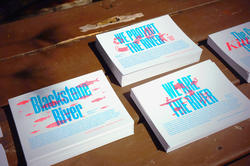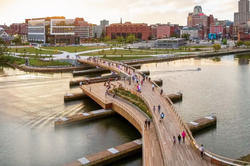Landscape Architecture students develop environmentally just proposals for managing sea-level rise in the Narragansett Bay as part of the Envision Resilience Challenge.
The Return of the Design-Build
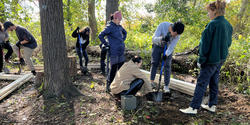
One of the core elements of RISD’s Landscape Architecture program is the design-build project, which has taken past students to such nearby locales as Central Falls, RI and Fall River, MA and as far away as the island of Sri Lanka. “During the height of the COVID pandemic, however, everyone was stuck in their computers,” says Professor Elizabeth Hermann, “so I felt very strongly about bringing design-build back into the first-year Design Principles course.”
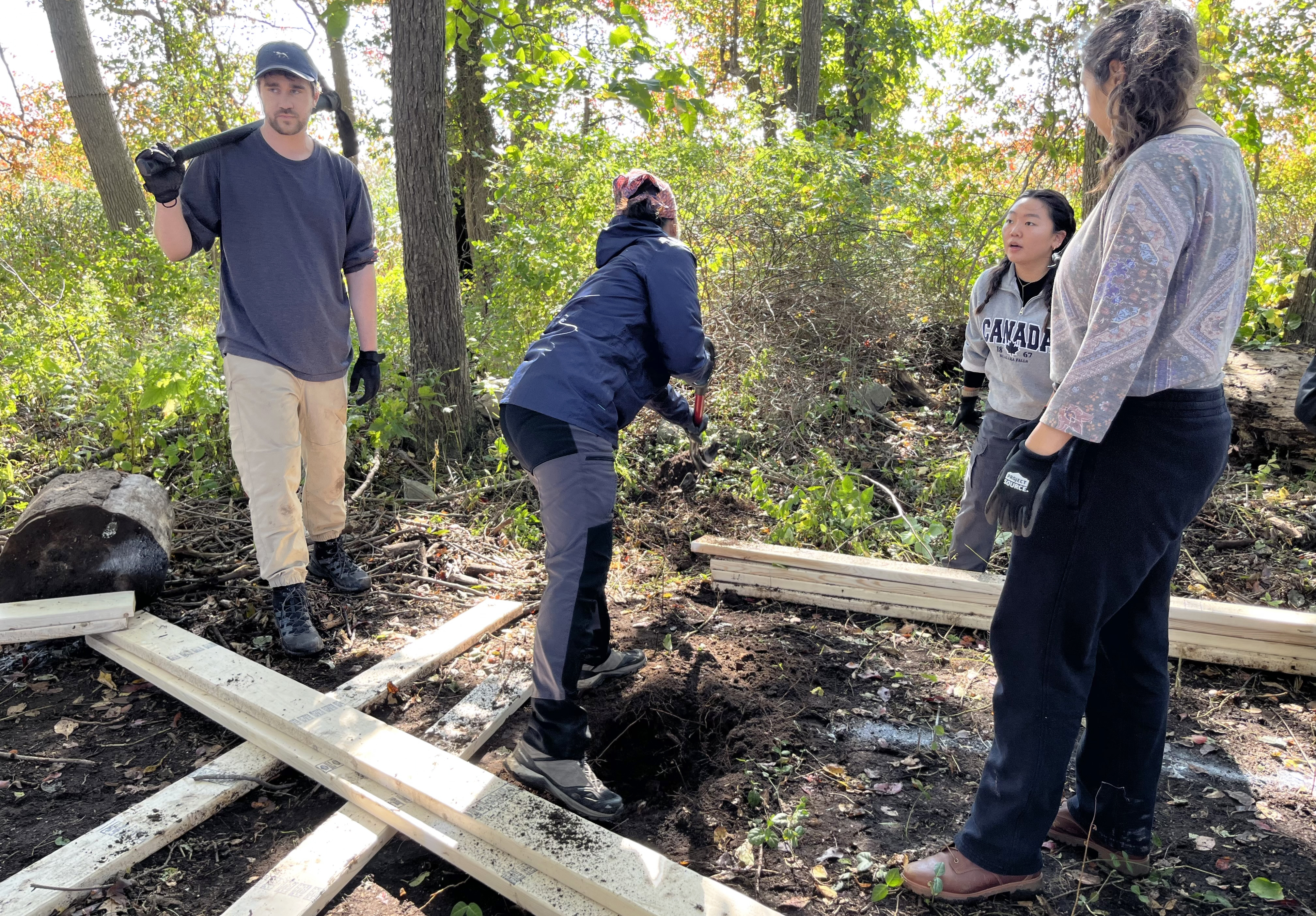
“This project is different from previous design-builds because all 21 students are working together collaboratively to go through the design process, make adjustments to the design and figure out the best way to build it through consensus,” adds Hermann’s teaching partner Assistant Professor Gavin Zeitz MLA 18.
The class is working on an observation deck at RISD’s bayfront Tillinghast Farm property, where visitors will be able to experience the natural beauty of the site, see the horizon through the trees and enjoy a breeze off the Narragansett Bay. The structure is primarily pine boardwalks of varying widths and will stand at four feet high at its tallest point.
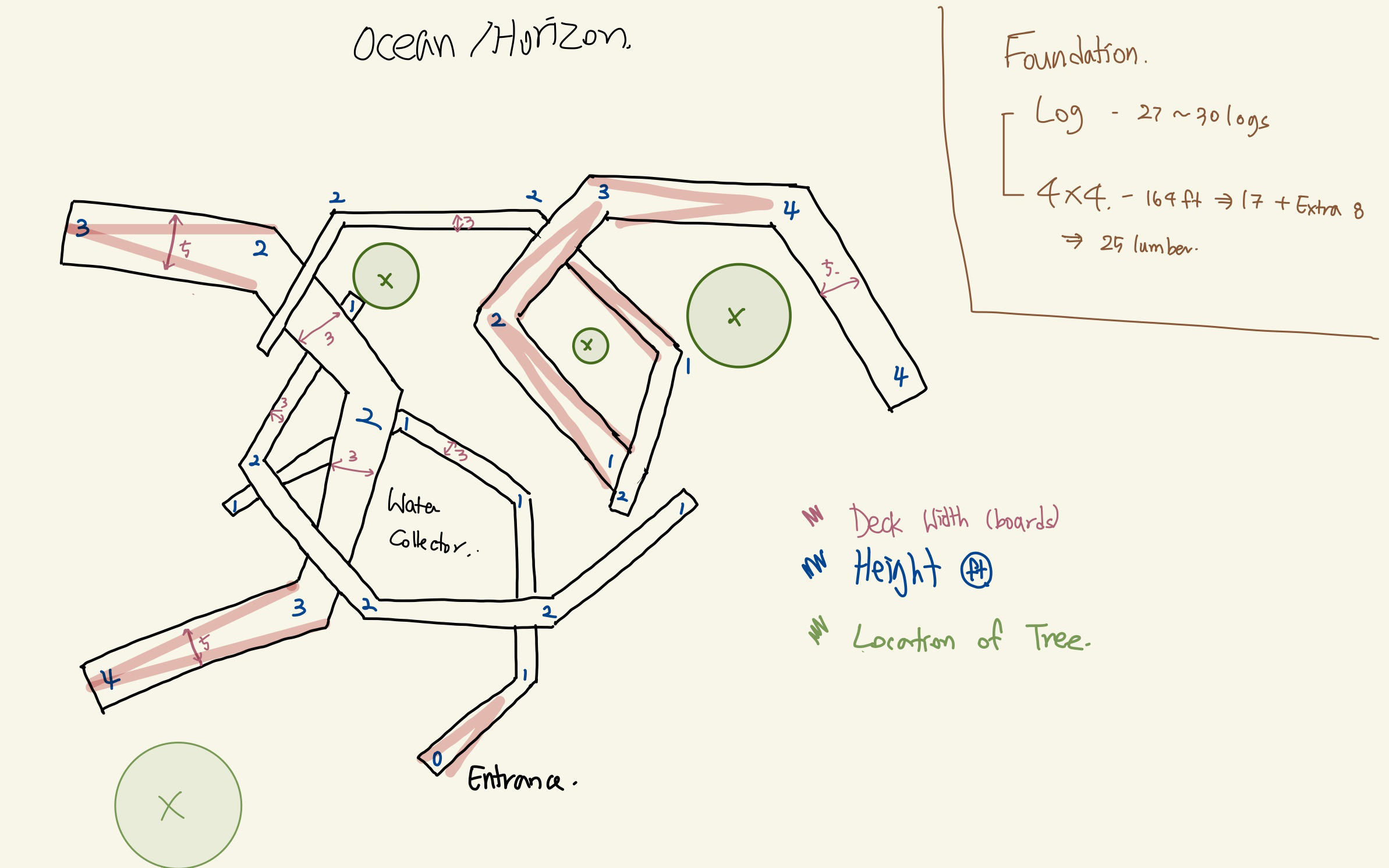
“The original plan was five feet tall, but we’ve had to improvise a lot on site,” says grad student Serena Kwon MLA 25. “But you’ll definitely be able to see the horizon and the bay in the winter, after the trees lose their leaves.”
In addition to building the boardwalks, Kwon and her classmates are busy digging holes for footings and weaving handrails out of vines and discarded materials they found at the site. They’re also making use of broken slate, tree stumps, old rebar and other found materials, which ties into one of the department’s key commitments: to use sustainable and locally available materials as well as upcycled waste materials whenever possible.
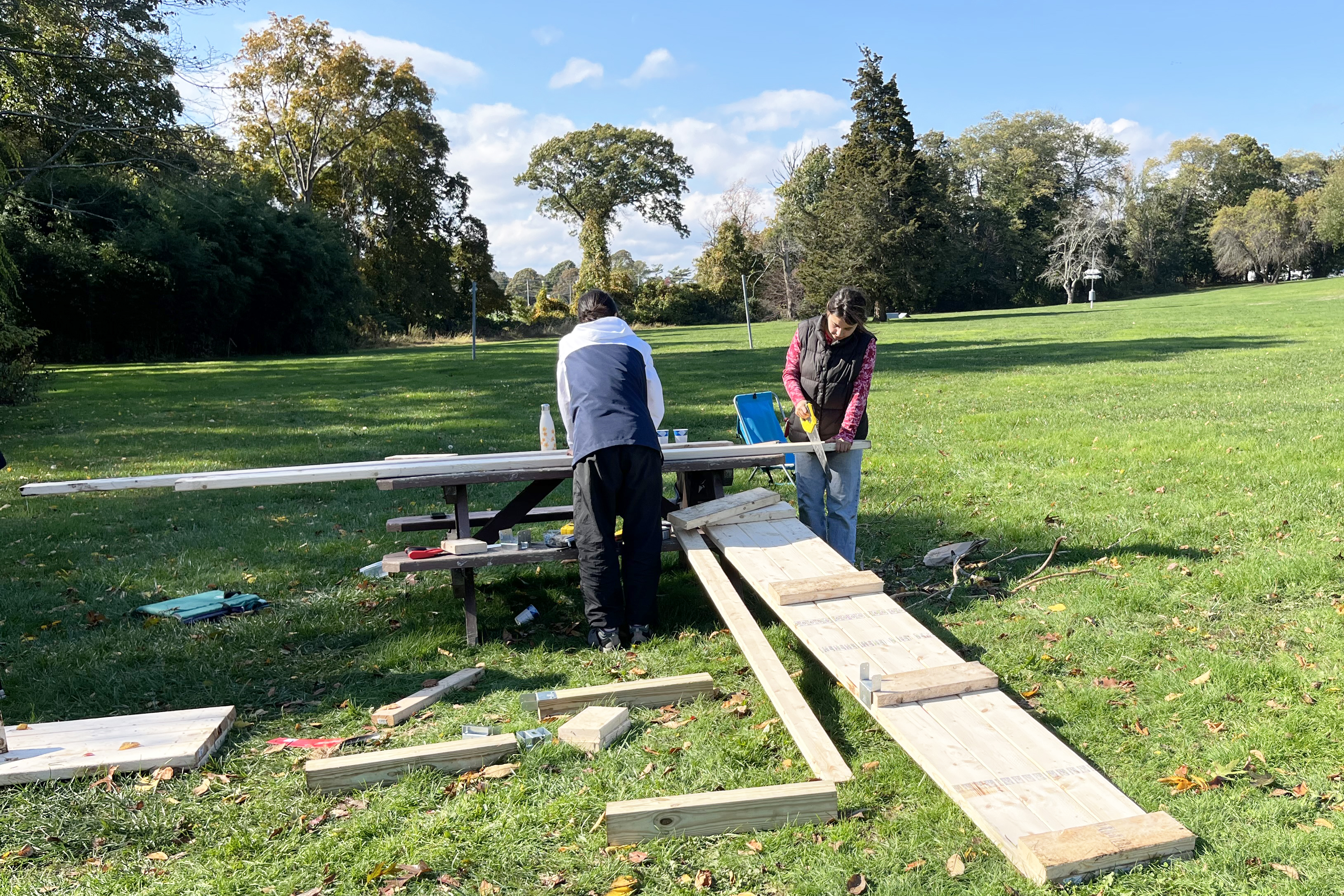
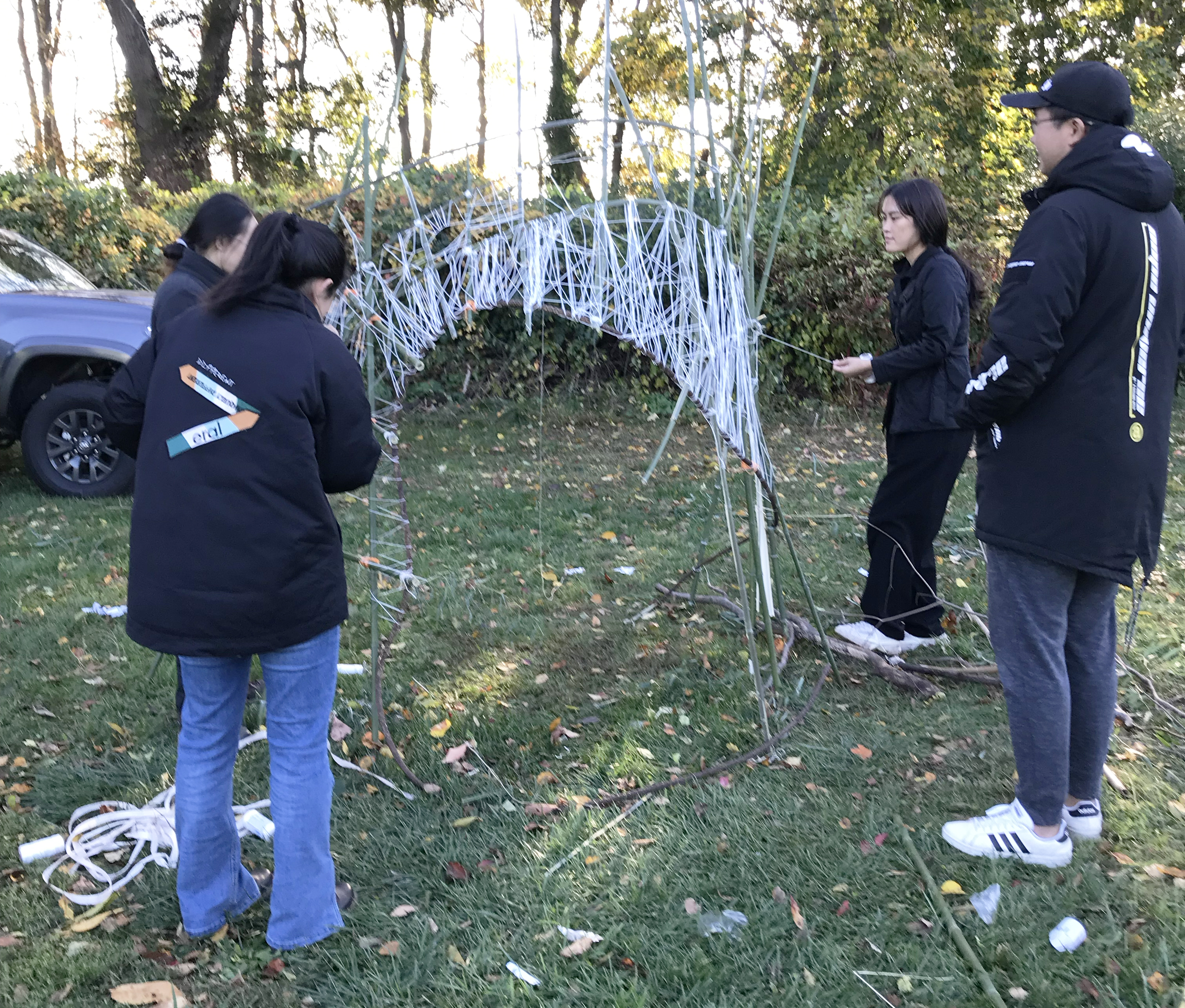
The studio introduces students to the core principles of design through a series of exercises focused on the development of an iterative process. It presents a wide range of important landscape architecture concepts, including observation, measure, inductive and deductive reasoning, interpretation, systems and dynamics, time and abstraction.
“We spent so much time planning, but now that we’re on the site, we have to solve material problems and learn construction skills.”
And, as grad student Shicheng Tang MLA 25 points out, it’s also fun to get out of the studio and do some hands-on work. “It’s my first time doing construction with classmates,” Tang says. “We spent so much time planning, but now that we’re on the site, we have to solve material problems and learn construction skills. It’s a great opportunity to get to know each other.”
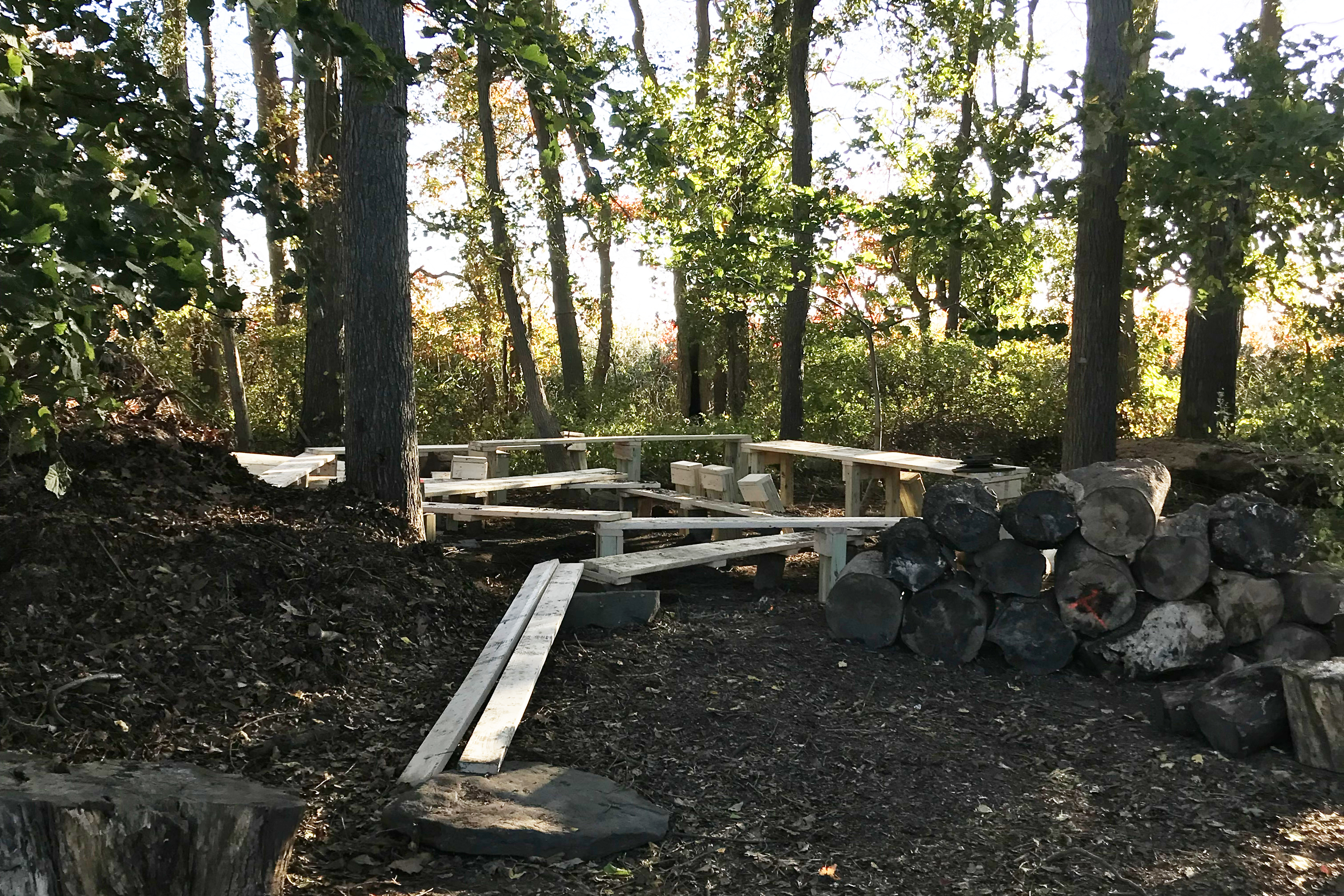
The team credits Technical Assistant Tucker Houlihan and Facilities Director Joe Realejo, whose help was instrumental in making the project come together. Hermann hopes it will be completed in the next few weeks and looks forward to seeing how the site changes with the changing seasons.
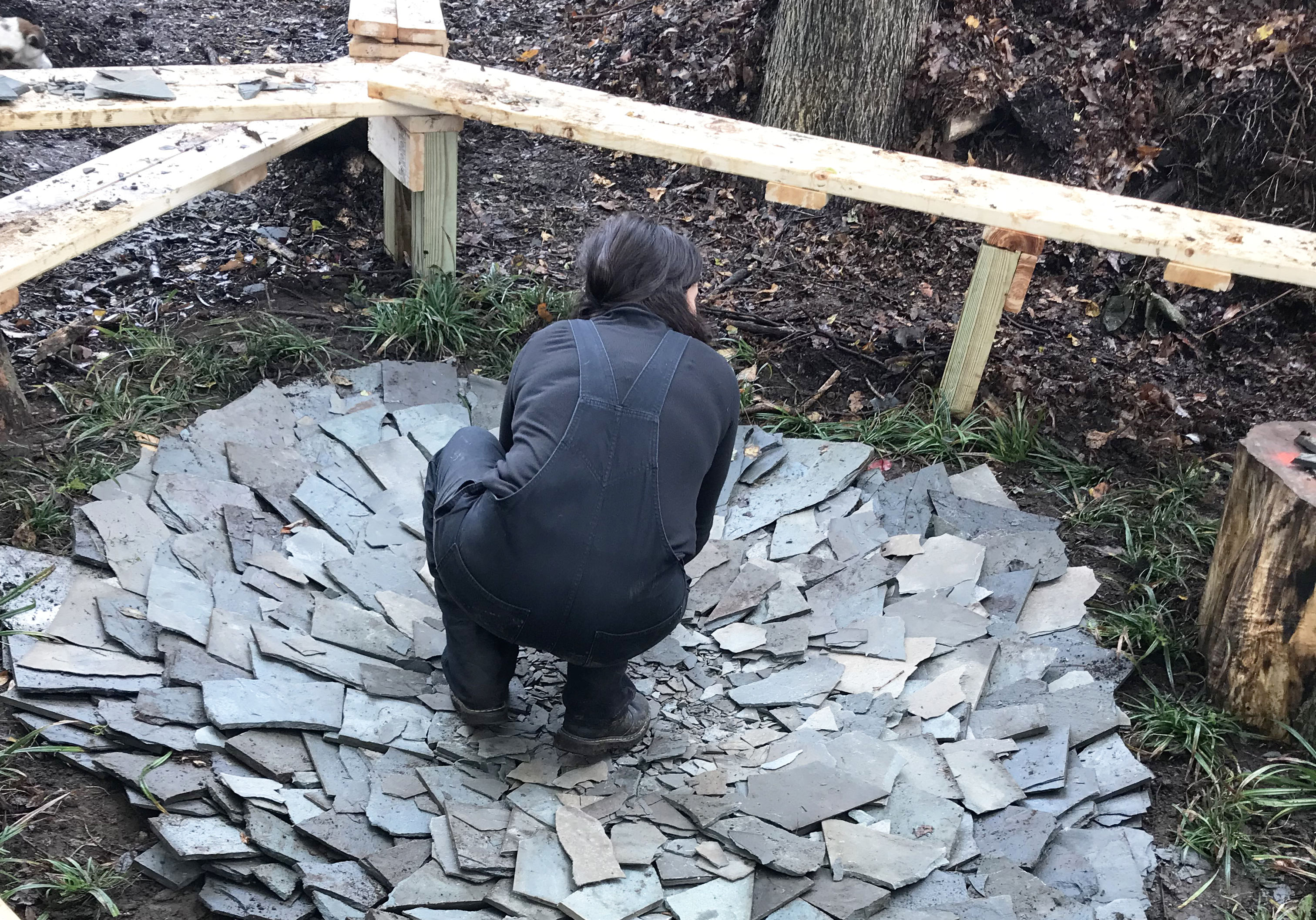
“It’s intended to be a permanent but movable structure,” she explains. “The plan is that next year’s group will respond to what’s already here. This has been a learning curve for this year’s students, and I’ve come to love their good spirits, even when they’re working out here in the pouring rain!”
—Simone Solondz / photos by Isabel Roberts
November 1, 2022

